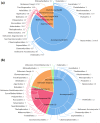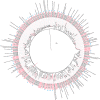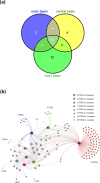Diversity and distribution of fungal communities in the marine sediments of Kongsfjorden, Svalbard (High Arctic)
- PMID: 26494429
- PMCID: PMC4615975
- DOI: 10.1038/srep14524
Diversity and distribution of fungal communities in the marine sediments of Kongsfjorden, Svalbard (High Arctic)
Abstract
This study assessed the diversity and distribution of fungal communities in eight marine sediments of Kongsfjorden (Svalbard, High Arctic) using 454 pyrosequencing with fungal-specific primers targeting the internal transcribed spacer (ITS) region of the ribosomal rRNA gene. Sedimentary fungal communities showed high diversity with 42,219 reads belonging to 113 operational taxonomic units (OTUs). Of these OTUs, 62 belonged to the Ascomycota, 26 to Basidiomycota, 2 to Chytridiomycota, 1 to Zygomycota, 1 to Glomeromycota, and 21 to unknown fungi. The major known orders included Hypocreales and Saccharomycetales. The common fungal genera were Pichia, Fusarium, Alternaria, and Malassezia. Interestingly, most fungi occurring in these Arctic sediments may originate from the terrestrial habitats and different basins in Kongsfjorden (i.e., inner basin, central basin, and outer basin) harbor different sedimentary fungal communities. These results suggest the existence of diverse fungal communities in the Arctic marine sediments, which may serve as a useful community model for further ecological and evolutionary study of fungi in the Arctic.
Figures





References
-
- Grebmeier J. M. et al. A major ecosystem shift in the northern Bering Sea. Science 311, 1461–1464 (2006). - PubMed
-
- Post E. et al. Ecological dynamics across the arctic associated with recent climate change. Science 325, 1355–1358 (2009). - PubMed
-
- Vincent W. F. Microbial ecosystem responses to rapid climate change in the Arctic. ISME J. 4, 1089–1091 (2010). - PubMed
-
- Kohlmeyer J. & Kohlmeyer E. Marine Mycology: The Higher Fungi. (Academic Press, London, 1979).
-
- Damare S., Singh P. & Raghukumar S. Biotechnology of Marine Fungi. In Biology of Marine Fungi. (ed. Raghukumar C. ) 278 (Springer-Verlag, Berlin Heidelberg, 2012). - PubMed
Publication types
MeSH terms
Associated data
LinkOut - more resources
Full Text Sources
Other Literature Sources
Medical

